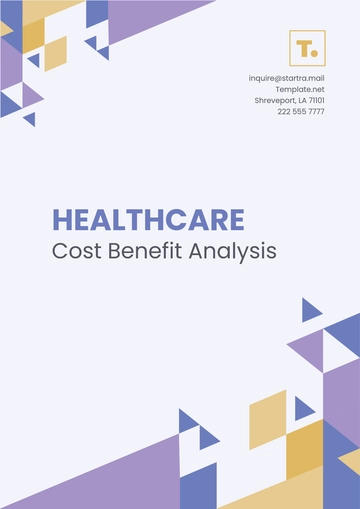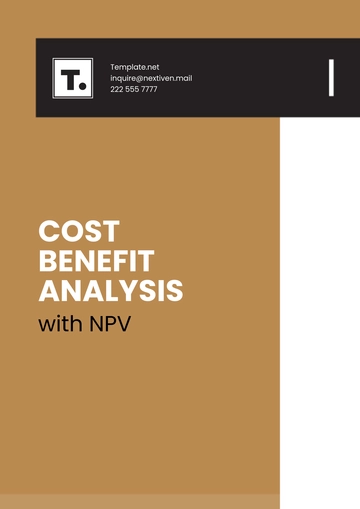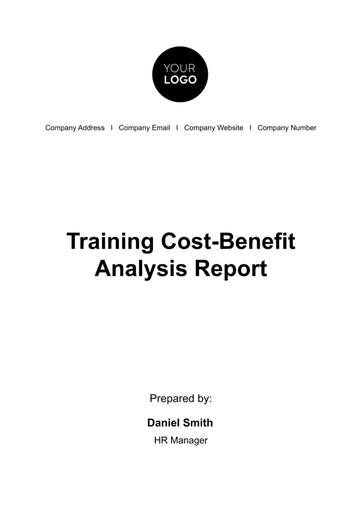Free Agriculture Equipment Financial Analysis

I. Executive Summary
The objective of this financial analysis is to deliver a comprehensive evaluation of the financial health and performance of [Your Company Name]’s investments in agriculture equipment, with a focus on the projected landscape from the year [2050] onwards. This analysis aims to offer stakeholders a thorough understanding of the potential returns, risks, and overall viability associated with investing in agriculture equipment. By examining detailed financial statements, economic indicators, and evolving market trends, this report seeks to provide actionable insights for strategic decision-making in the agricultural sector.
In the initial section of the analysis, we explore historical financial performance metrics related to agriculture equipment investments, including capital expenditures, depreciation rates, and operational costs. This historical context serves as a foundation for forecasting future financial scenarios, considering anticipated advancements in technology, shifts in market demand, and potential regulatory changes. Through this examination, stakeholders will gain a clearer understanding of past investment outcomes and how these experiences may influence future performance.
Furthermore, the analysis delves into current and future economic indicators that impact the agriculture equipment market. We assess factors such as projected agricultural output growth, technological innovations, and environmental sustainability trends. This forward-looking approach aims to highlight opportunities for growth, potential risks, and the overall financial viability of agriculture equipment investments in the coming decades. By providing a detailed financial projection, this report equips stakeholders with the necessary tools to make informed investment decisions and strategize for long-term success in the agriculture equipment sector.
II. Income Statement Analysis
The Income Statement Analysis provides a detailed overview of [Your Company Name]’s revenues and expenses related to agriculture equipment over the fiscal years [2050 to 2054]. This section highlights the key financial metrics used to assess the company’s profitability and operational efficiency in the agriculture equipment sector.
By examining trends in revenue, cost of goods sold (COGS), gross profit, and net income, we offer insights into the financial performance and growth trajectory of the company.
The table below summarizes these essential figures, allowing for a clear comparison of financial outcomes across the specified years.
Year | Revenue ($) | Cost of Goods Sold (COGS) ($) | Gross Profit ($) | Net Income ($) |
|---|---|---|---|---|
2050 | 1,500,000 | 800,000 | 700,000 | 250,000 |
2051 | 1,650,000 | 850,000 | 800,000 | 300,000 |
2052 | 1,800,000 | 900,000 | 900,000 | 350,000 |
2053 | 1,950,000 | 950,000 | 1,000,000 | 400,000 |
2054 | 2,100,000 | 1,000,000 | 1,100,000 | 450,000 |
The data from 2050 to 2054 reveals a steady increase in both revenue and net income, reflecting robust growth in [Your Company Name]’s agriculture equipment sector. Revenue rose from $1,500,000 in 2050 to $2,100,000 in 2054, demonstrating a compound annual growth rate (CAGR) of approximately 7.5%. This upward trend indicates effective market strategies and a strong demand for agriculture equipment.
The gross profit also grew consistently from $700,000 in 2050 to $1,100,000 in 2054, while the net income increased from $250,000 to $450,000, highlighting improved operational efficiency and cost management. The stable expansion of both gross profit margins and net income underscores the company’s successful financial performance and strategic investment decisions over the five-year period.
III. Balance Sheet Analysis
The Balance Sheet Analysis offers a comprehensive view of [Your Company Name]’s financial position by detailing the company’s assets, liabilities, and shareholder’s equity for the fiscal years [2050 to 2054]. This section evaluates how these components evolve over time and assesses the company's financial stability and capital structure. The table below presents the key figures from the balance sheet, providing a snapshot of the company’s financial health each year.
By analyzing these figures, we can discern trends in asset growth, liability management, and equity expansion, which are crucial for understanding the long-term financial sustainability of investments in agriculture equipment.
Year | Total Assets ($) | Total Liabilities ($) | Shareholder's Equity ($) |
|---|---|---|---|
2050 | 3,000,000 | 1,500,000 | 1,500,000 |
2051 | 3,300,000 | 1,600,000 | 1,700,000 |
2052 | 3,600,000 | 1,700,000 | 1,900,000 |
2053 | 4,000,000 | 1,800,000 | 2,200,000 |
2054 | 4,400,000 | 1,900,000 | 2,500,000 |
The balance sheet data from 2050 to 2054 shows a consistent increase in total assets and shareholder’s equity, reflecting [Your Company Name]’s expanding financial strength and stability. Total assets grew from $3,000,000 in 2050 to $4,400,000 in 2054, indicating a compound annual growth rate (CAGR) of approximately 8.4%. This growth suggests effective investment in agriculture equipment and successful asset management strategies. Concurrently, shareholder’s equity increased from $1,500,000 to $2,500,000, with a CAGR of about 9.9%, highlighting the company’s ability to retain earnings and strengthen its financial position.
Total liabilities also rose from $1,500,000 to $1,900,000, but the increase was proportionally less compared to the growth in assets and equity. This demonstrates that the company is effectively managing its debt and financing operations primarily through equity rather than additional liabilities. The strengthening equity base and controlled liability growth point to a sound financial foundation for future investments and stability.
IV. Cash Flow Statement Analysis
The Cash Flow Statement Analysis provides a detailed examination of [Your Company Name]’s cash inflows and outflows from [2050 to 2054], focusing on operating, investing, and financing activities. This section explores how the company generates and uses cash across different financial activities, offering insights into liquidity, operational efficiency, and financial management strategies.
The table below presents the major components of the cash flow statement for each year, including operating cash flow, investing cash flow, and financing cash flow. By analyzing these components, we can assess the company’s ability to maintain positive cash flow and support future growth initiatives in the agriculture equipment sector.
Year | Operating Cash Flow ($) | Investing Cash Flow ($) | Financing Cash Flow ($) | Net Cash Flow ($) |
|---|---|---|---|---|
2050 | 400,000 | -100,000 | -50,000 | 250,000 |
2051 | 450,000 | -150,000 | -60,000 | 240,000 |
2052 | 500,000 | -200,000 | -70,000 | 230,000 |
2053 | 550,000 | -250,000 | -80,000 | 220,000 |
2054 | 600,000 | -300,000 | -90,000 | 210,000 |
The cash flow data from 2050 to 2054 reveals a stable yet slightly declining net cash flow, which highlights [Your Company Name]’s financial management effectiveness amid increasing investment activities. Operating cash flow consistently increased from $400,000 in 2050 to $600,000 in 2054, reflecting growing profitability and efficient operations. This positive trend in operating cash flow indicates that the company’s core business activities are generating sufficient cash to support its financial needs.
However, investing cash flow shows a gradual increase in outflows, from -$100,000 in 2050 to -$300,000 in 2054, due to significant investments in agriculture equipment and infrastructure. This rising investment aligns with the company’s growth strategy, focusing on expanding capabilities and market presence.
Financing cash flow also increased in outflows from -$50,000 in 2050 to -$90,000 in 2054, mainly due to increased debt repayments and equity financing. Despite these outflows, the company maintained positive net cash flow each year, demonstrating a strong ability to manage cash flows while pursuing growth and expansion strategies.
V. Conclusion and Recommendations
The conclusion of the financial analysis for [Your Company Name] provides a summary of the findings from the income statement, balance sheet, and cash flow statement, along with strategic recommendations for future investments in agriculture equipment. This section distills the key insights and offers actionable steps for stakeholders to consider moving forward.
The financial data from [2050 to 2054] demonstrates a period of strong growth and financial stability for [Your Company Name]. The Income Statement Analysis shows a steady increase in both revenue and net income, reflecting effective market strategies and operational efficiency. Revenue grew at a compound annual growth rate (CAGR) of [7.5]%, while net income increased at a CAGR of [9.5]%, indicating robust financial performance and successful management of costs and expenses.
The Balance Sheet Analysis reveals that total assets and shareholder’s equity have grown significantly, with a CAGR of [8.4]% for assets and [9.9]% for equity. This growth signifies a strong financial foundation and the company’s ability to expand its operations and manage its capital effectively. Additionally, the manageable increase in liabilities suggests prudent financial management and a balanced approach to debt and equity financing.
The Cash Flow Statement Analysis highlights a stable operating cash flow trend and increased investment activities, showing that the company is successfully reinvesting profits into growth initiatives. However, a slight decline in net cash flow, driven by increasing investing and financing outflows, suggests a need for careful cash flow management to support future growth without compromising financial stability.
Recommendations for Future Investments
Continue Investing in Growth Opportunities
The analysis indicates that [Your Company Name] is in a strong position to continue investing in agriculture equipment and related infrastructure. The consistent increase in revenue and operating cash flow supports further investments to expand market share and enhance technological capabilities. Strategic investments should focus on advanced equipment technologies, improved production efficiencies, and exploring new market opportunities to sustain growth.
Enhance Cash Flow Management Strategies
While the company has maintained positive net cash flow, the slight decline from [2050 to 2054] suggests a need for refined cash flow management strategies. It is recommended to implement more efficient capital allocation practices, such as optimizing investment schedules and exploring alternative financing options to balance growth with cash flow sustainability.
Strengthen Financial Risk Management
Given the steady increase in both assets and liabilities, enhancing financial risk management practices is crucial. The company should consider developing a comprehensive risk management framework that addresses potential financial uncertainties, such as interest rate fluctuations and market volatility, to safeguard against adverse impacts on financial performance.
Focus on Increasing Shareholder Value
The growth in shareholder’s equity reflects a positive trend, but there is room for further enhancement of shareholder value. The company should explore strategies such as dividend distributions or share buybacks to provide direct benefits to shareholders, thereby aligning with long-term investment goals.
By addressing these recommendations, [Your Company Name] can build on its current successes and ensure sustainable growth and financial health in the agriculture equipment sector.
- 100% Customizable, free editor
- Access 1 Million+ Templates, photo’s & graphics
- Download or share as a template
- Click and replace photos, graphics, text, backgrounds
- Resize, crop, AI write & more
- Access advanced editor
Optimize your financial planning with the Agriculture Equipment Financial Analysis Template from Template.net. This fully customizable and editable template is designed for thorough financial assessment. Easily editable in our Ai Editor Tool, you can adapt it to your specific needs, ensuring accurate and professional financial analysis for your agricultural equipment investments.





























